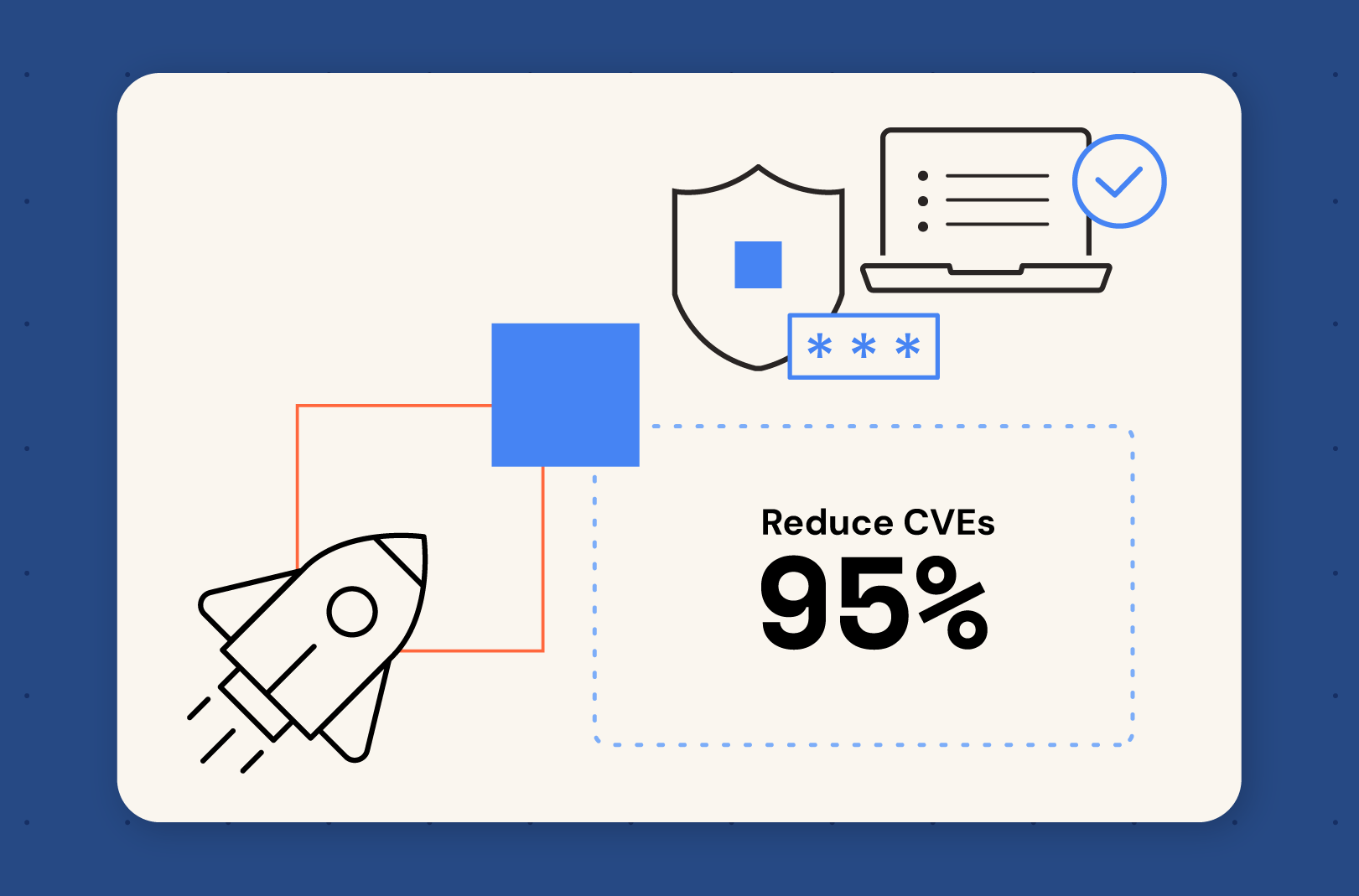
Tech companies delivering modern software, especially in containerized and Kubernetes-based environments, face mounting pressure to move fast and stay secure. These pressures are especially pronounced when serving customers in security-sensitive sectors such as government (FedRAMP), healthcare (HIPAA), or finance (PCI).
Traditional container images, often derived from bloated base layers, introduce hundreds of unnecessary vulnerabilities and unpredictable dependencies. Minimus addresses this gap with purpose-built, ultra-minimal container images that reduce vulnerability counts by 95% or more compared to common official images.
Modern containerization has enabled faster, more scalable software delivery, but it’s also introduced new challenges for meeting compliance requirements. What makes containers efficient for development often makes them harder to secure and govern at scale.
Below are some of the most common obstacles organizations face when trying to meet security and compliance expectations in container and Kubernetes-based environments:
Most container base images include shells, compilers, package managers, and other tools that have no role in production, drastically expanding the attack surface. Managing vulnerability exposure starts with minimizing what's in your image to begin with.
Compliance frameworks like FedRAMP and HIPAA require timely and risk-based remediation. But most scanning tools treat every CVE the same, leading to alert fatigue and lost time. Without context on which vulnerabilities are actually being exploited in the wild, teams are left guessing at what matters.
Manual compliance workflows, like alert routing or triggering rebuilds, introduce latency into patch cycles and raise the risk of human error, making it harder to move quickly and respond effectively to emerging threats.
Air-gapped, classified, or sovereign environments are common in regulated sectors. Most security tools aren’t built to function offline, which leaves teams cobbling together workarounds to stay compliant.
From Executive Orders to SLSA and FedRAMP, the pressure is on to prove exactly what’s in your software. But verifying provenance and producing signed, auditable artifacts is hard when container images are layered, opaque, and not built with reproducibility in mind.
Minimus helps software teams align with major security frameworks by eliminating bloat and reducing CVEs from the start, automating secure practices, and enabling full supply chain transparency. Here’s how:
Minimus images are constructed using a distroless model, including only the runtime dependencies required by a specific application. By eliminating package managers, shells, compilers, and other non-essential components, they reduce both the attack surface and the complexity of achieving image-level compliance with FedRAMP, CIS benchmarks, and Kubernetes hardening guidance.
Minimus supplies threat intelligence from multiple sources, enriching CVE metadata with exploitability insights, active campaign indicators, and in-the-wild threat signals. This allows security teams to prioritize image updates based on likelihood of real-world exploitation, not just severity scores, optimizing patch workflows and aligning with NIST 800-190 and SSDF (Secure Software Development Framework) guidance.
Minimus integrates seamlessly into CI/CD and security response pipelines through native action providers. These include out-of-the-box support for GitHub Actions, Slack alerts, webhooks, and more, enabling policy-driven automation such as triggering rebuilds or notifying teams. This reduces friction between engineering and security while allowing development to move quickly.
Minimus images are designed for use in fully disconnected or classified environments, with no reliance on public registries or cloud APIs. Agencies and regulated enterprises can self-host both images and update infrastructure to support zero-trust and air-gapped Kubernetes clusters, meeting SC-12 and SC-28 control requirements in FedRAMP and NIST 800-53.
Each image is built using a reproducible pipeline and includes a cryptographically signed SBOM. These capabilities meet key supply chain integrity requirements from frameworks like SLSA, FedRAMP SA-11(2), and emerging executive orders on software transparency.
The chart below maps core Minimus capabilities to common security control objectives across frameworks like FedRAMP, NIST, and SLSA, making it easier to understand how Minimus supports your compliance goals.
Built for modern, secure software delivery, Minimus helps engineering teams consistently meet demanding security and compliance standards. With integrated threat intelligence for real-world exploit prioritization, built-in automation via action providers, and full support for self-hosting in restricted and air-gapped environments, Minimus makes it easier to stay ahead of risk.
By starting with a hardened foundation, Minimus helps teams move faster, reduce complexity, and maintain compliance by default.